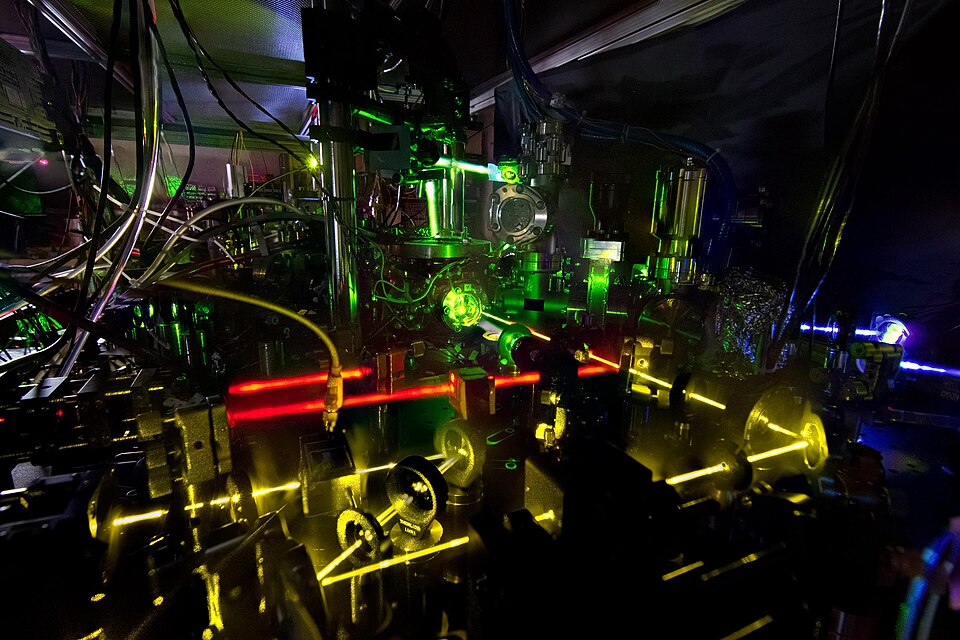
Why is an atomic clock so accurate? Atomic clocks are accurate because atoms oscillate at a stable and predictable frequency. All clocks work by using the number of movements of something to calculate the passage of time. They do this by knowing how many movements of something equal a second and working from that. Mechanical clocks do it by using the potential energy stored in a spring to turn cogs and the number of turns of a cog equaled a second. Pendulum clocks used the number of movements of the pendulum. It takes the pendulum one second to swing all the way to one side and back, turning a cog and the clock hands.
Clocks that are made of mechanical parts are far more accurate than they used to be. Mechanical clocks work by counting A very expensive and well made mechanical clock will only lose about one minute a month. Very early mechanical clocks lost about fifteen minutes a day, sometimes more. Christiaan Huygens pendulum clock in the 17th century made clocks far more accurate and reduced the inaccuracy to about 1 minute a day. However, nothing can be done to make a mechanical clock completely accurate because it uses parts that are subject to wear, friction, vibration, and expansion and contraction from heat. You can also get a clock that sets its time from a quartz crystal. Quartz is a piezoelectric material, which means it produces an electric current when it is bent, or it bends when an electric current is passed through it. When quartz is used in a clock, a specific electric current is passed through the quartz to make it vibrate 32,768 times in one second. A counter in the clock counts the vibrations and moves the second hand on one after every 32,768 vibrations. These clocks are more accurate than mechanical clocks, but they can gain or lose 15 seconds a month. That doesn’t sound like a lot and it probably wouldn’t affect our daily lives. If your watch was 3 minutes out by the end of the year, you might find it annoying, but you probably wouldn’t be late for anything, unless you like to get to appointments within 3 minutes. You will just reset your watch. However, if you are trying to control satellites, for example the GPS system, then 15 seconds is a huge problem and can mean satellites crashing or GPS not working.
Atomic clocks are far more accurate. The most recent atomic clock will lose one second every 30 billion years! How can they be so accurate? An atomic clock works on a similar principle as a quartz clock, but it is counting the frequency of the wavelength of light energy given off by an atom and not vibrations of a piece of crystal. When an electron absorbs energy, it moves to a higher orbit, loses the energy, and moves back to its original orbit. This happens because electrons are in a specific energy band. When they receive the right wavelength of energy, they move up to a higher energy band, but they don’t like to be there. Electrons want to return to their natural energy level, so they get rid of the energy as quickly as possible as a light photon. When the energy has gone, they can move back to the original band, and they are happy again.
Atomic clocks usually use a molecule called caesium-133. Caesium-133 only has one electron and that electron will only move to a higher energy band if it receives energy that has a frequency of 9,192,631,770 Hz. That means the energy wave is oscillating over 9 billion times a second. When energy at that frequency hits the atom, its electron absorbs it and then releases a light photon at the exact same frequency. The caesium-133 starts to glow. If the frequency of the energy is too high or too low, the electron won’t absorb it and the caesium-133 won’t glow. Detector technology can tell if photons are being released or not.
The length of one second has been defined as 9,192,631,770 waves of energy. It is not the amount of times that the caesium-133 oscillates. The caesium-133 is used because it requires exactly that amount of energy to jump electron energy bands and can be used as a way of making sure the radiation has the correct frequency. You probably won’t be able to get an atomic watch on your wrist because it takes a lot of machinery and lasers. However, you can use an Internet based clock, which is set by an atomic clock. And this is what I learned today.
Sources
https://en.wikipedia.org/wiki/Quartz_clock
https://science.howstuffworks.com/question40.htm
https://www.bbc.com/news/magazine-29476893
https://www.timeanddate.com/time/how-do-atomic-clocks-work.html
https://en.wikipedia.org/wiki/Atomic_clock
https://physics.stackexchange.com/questions/203499/oscillation-of-atom
Image By Credit: N. Phillips/NIST – https://www.nist.gov/news-events/news/2016/11/nist-debuts-dual-atomic-clock-and-new-stability-record, Public Domain, https://commons.wikimedia.org/w/index.php?curid=115240222
